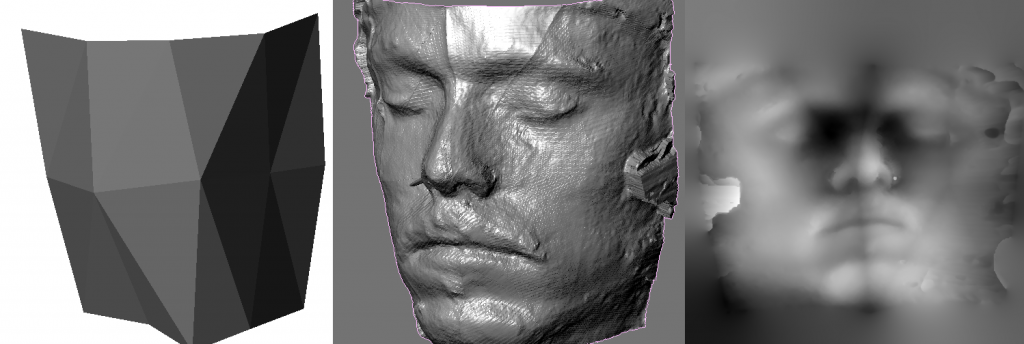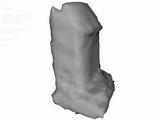Posts Tagged flow
Variational Displacement Map Recovery
Shortly after working on some variational scene flow (from a single moving camera), I thought it might be a good idea to implement the same ideas to reconstruct both a displacement map and a flow map on top of a base mesh. The variational formulation for displacement map estimation is more or less the same. I parameterized the displacement as displacement along the normal (something that we have done before), so the objective is to find the displacements on the mesh such that the image score is minimized (in this case, pairwise SSD scores), while having a regularization constraint over the displacements (and flow vectors) in the uv-coordinates.
I had implemented this idea, and barely tested it on anything. This last week, I figured that I could use parts of the project to generate some data. So I wanted tos hare my results. Below is a sample of three input images from a synthetic sequence. The images were lit from several lights to ensure the best conditions for the shape estimation (e.g., the SSD score wouldn’t get confused). The results look pretty good. And they should. This is a pretty good situation for stereo.
The idea of solving for flow required that there were multiple images of the object deforming over time. Again, I tested this on a similar sequence, where now the object had some texture (to enable the flow recovery), and I also introduced some motion. The idea is now to recover both the displacement map (that ensures stereo consistency at time t=0), and also the 3D flow map that warps this image forward in time (t > 0). Ideally, there would also be some temporal consistency between flow maps at (t>0), but for now I simply solved for the displacement and flow simultaneously for pairs (t=0, t=1), (t=0, t=2), etc
In this case the input sequences look something like the sequence below:
Again, the reconstruction, for the most part was okay. There is one exception: the displaced meshes sometimes overlap/intersect, which means that they are not as useful in the application that I wanted to use them in (that is without post processing). Notice that there is flow roughly in the regions of the eyse and near the mouth, which agrees with the input sequence. The displacement looked similar to the non flowed case.
The resulting, recovered mesh appears beside the input rendering in the following video. I could have probably chosen the regularization parameters better. If the video doesn’t load, try this link: flowed_result.









